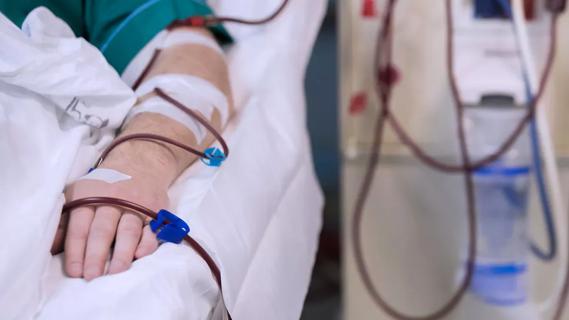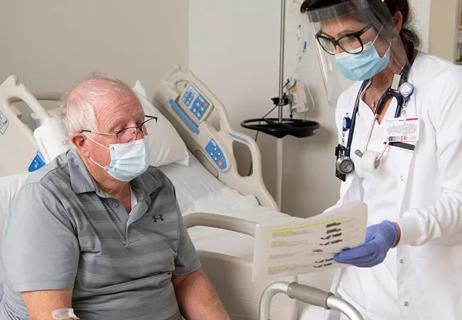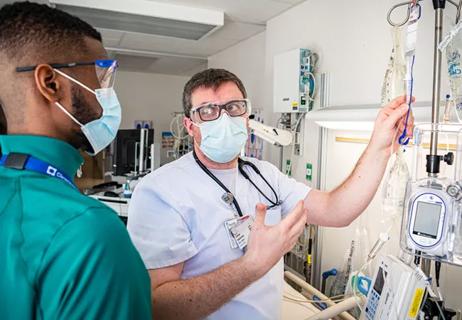Nurses are more adept at helping bCAM positive patients

In August 2017, Cleveland Clinic Hillcrest Hospital began monthly delirium prevalence rounds to help address preventable measures and encourage early awareness of delirium. Research has identified that delirium is an independent predictor of unplanned 30-day hospital readmissions. Identifying the causes and risk factors associated with diagnosis of delirium, especially after surgery, can reduce soaring readmission rates and help lower healthcare costs.
Cleveland Clinic is a non-profit academic medical center. Advertising on our site helps support our mission. We do not endorse non-Cleveland Clinic products or services. Policy
“We needed to heighten our awareness in our assessment of patients to try to prevent delirium as much as possible,” says Linda Pasek, MSN, APRN-CNS, clinical nurse specialist at Hillcrest Hospital. “Delirium prevalence rounds provide a great opportunity to step back and ask, ‘Even though we assess for delirium, are we doing it accurately and understanding it totally?’”
Pasek worked with members of the hospital’s NICHE (Nursing Improving Care for Healthsystem Elders) Committee to develop a process for monthly rounds, which are conducted by geriatric resource nurses (GRNs). First, she created a simple survey tool used by the GRNs during rounding. The tool includes the age, gender and admission diagnosis for each patient. It also features the following questions:
On the fourth Monday of each month, the NICHE Committee meets for about 30 minutes to discuss issues related to delirium on the units. The GRNs then receive folders from Pasek with the rounding tool, as well as a report on the previous month. Next, they round on the units, looking at the census and asking clinical nurses on the unit to determine which patients to visit. After rounding, the GRNs meet again for a debriefing and log information into the system so Pasek can examine the data and create reports.
Conversations held during the debriefing, as well as with clinical nurses on the units, have led to increased knowledge about delirium. It’s helped nurses understand the importance of accurately assessing patients as bCAM positive and emboldened them to question the plan of care for those patients, when necessary. “If we identify bCAM positive patients, then physicians can look carefully at their medications,” says Lynn Szoka, MSN, RN, GCNS-BC, nurse manager and coordinator of the NICHE Committee. “We’ve done a lot of great work reaching out to physicians if we believe patients are receiving an inappropriate drug.”
Education related to the delirium prevalence rounding has also led to improved hand-off reporting about patients and reinforced tools that nurses can use to keep patients oriented, such as activity aprons. The aprons have laces, ties, buttons and zippers on the front. Pasek recalls giving the apron to one patient who had been crawling around her bed and trying to get out of it. “She was totally focused on the activity apron all afternoon,” says Pasek, who later learned that the patient was a seamstress when she was younger.
The nursing staff now feels more empowered to help patients. “The nurses and nursing assistants advocate for the elderly and have the knowledge to help them get better,” says Szoka.
Pasek examines the data collected during the rounds and creates reports that reflect the success of the delirium prevalence rounding. Here are some key highlights:
“The monthly prevalence rounds are a learning experience and provide an opportunity for sharing knowledge among the nursing staff,” says Pasek. “We’re not trying to label patients: We just want to develop the right plan of care for them, keep them oriented or get them back to baseline, and ultimately release them home.”

Phone triage system reduces call backs and delays in care

New protocol reduces costs, increases patient and caregiver satisfaction

New options benefit caregivers, nursing units and patients

Nurses facilitate preoperative program to educate and prepare patients for ongoing care

Introduces at-home work and new patient screening tool

Health disparities, mental health and more

Ideas for approaches to prevention, response and more

Educating and developing generations of nurses